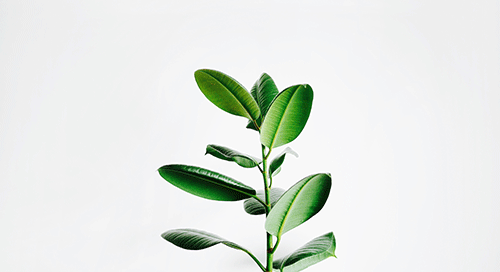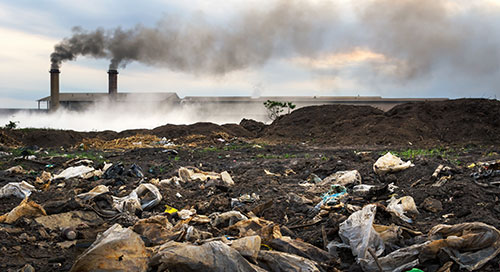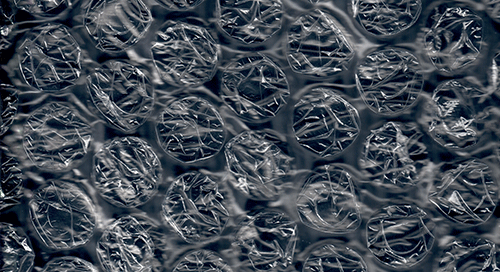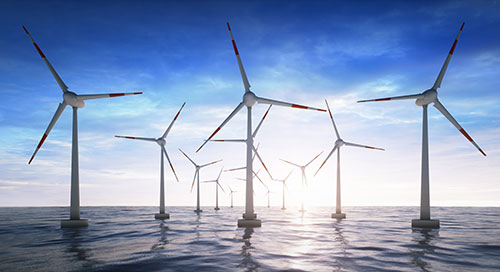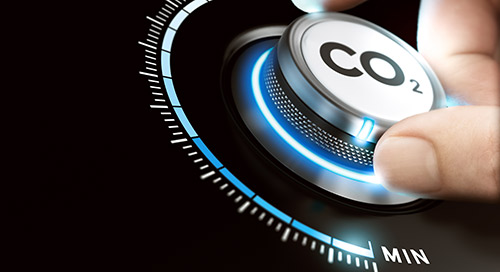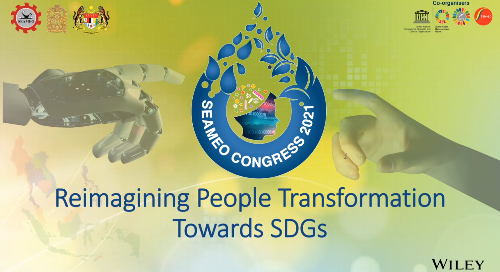art-in-the-anthropocene-what-do-art-and-sustainability-have-in-common
June 09, 2020
As a scientist with a creative mind, I’m always looking for ways to embrace the liberal arts in my courses—whether that’s finding ways to expand the minds of science majors or finding ways to get non-science majors into my classes. To do just that, the questions posed below are meant to engage us discussion and to generate personal reflection, new ideas for research, and curricular innovations.
Can Sustainability Be an Art?
One way to express our sense of being useful and the wide-scale human impacts on the environment and sustainable development is via art. Art and sustainability have worked together through history.
Starting with old Chinese ink engravings and Roman frescoes from 1 BC to the 15th and 16th Centuries, the relationship between painting, sustainability, and chemistry
in the environmental sense became evident in pictorial art. At the end of the 1970s, the Land Art movement, also known as Earth Art and Earthwork, became the first sustainable creative movement, both in form and content, due to its use of materials related to nature such as wood, soil, sand, stones, clay, water, and so on.
The relationship between art and sustainability is not only expressed a priori in the work but most importantly through the use of natural materials or materials respectful to the environment. This relationship reflects the protection of natural landscapes, the consequences of industrialization, the reuse of waste, and the impacts of climate change to name a few pictorial representations, but contrary to other forms of art, art focusing on sustainability does not have a certain look. It is not usually easily and quickly recognized because it rather depicts opinions about the role of art in the environment and in society. So practicing sustainability is an art in itself.
How Does a Scientist Get Involved in Art?
As a materials scientist who developed a passion for green chemistry during my graduate studies, I found myself leading a curricular innovation proposal about “Greener Art through Greener Chemistry” a couple of years ago.
I routinely offer a stand-alone chemistry course titled “Greener and Sustainable Chemistry” as a professor of Chemistry at Washington College, Chestertown, MD, but I have always wanted to expand the offering of this course to non science majors. However, this course, as is, would not be suitable to a wider audience of students with limited chemistry backgrounds.
What this course exhibited, though, is that bridging Chemistry and Art in sporadic hands-on activities was unanimously attractive to science students—showing students currently majoring in Chemistry or intending to major in a science field were thirsty for more of this type of interdisciplinary learning experience. They were consistently experimenting using a guided inquiry mindset and did not look at the clock once during a three-hour-long laboratory session. At the same time, it made me think that a cross-listed art and chemistry laboratory-based course would provide an original platform for students with a wide range of interests. This lab-based course would also create an opportunity to craft an exceptional environment in which first-year students and beyond would be engaged and challenged in new ways.
This course was designed so that the Chemistry and Art departments could offer a unique distribution course, which would attract potential majors to each discipline from an early start and would act as a stimulus for students to realize how this course demonstrates the mission of a liberal arts education.
Thinking about ways to incorporate more environmentally friendly chemistry in art while delineating the objectives of this unique course was not a small challenge. For an eco-friendly materials scientist who developed a passion for living what she teaches, it became evident that sustainability, and not just green chemistry, would play a critical role in expanding students’ views on the cross-disciplinary aspect of sustainable development and art.
How Can Sustainability Become a Bridge Among Disciplines?
It is undeniable that when asking a scientist, a politician, a business manager, a policymaker, or a student what sustainability means to them, a different answer arises. Despite a variety of points of view, there is no wrong or right answer, but rather a consensus that we can all learn from each other. In this case, I had so much to learn about art in addition to how to make and express art in a more environmentally friendly way.
Connecting the disciplines of green chemistry and art in one relevant course was the springboard to this curricular innovation. This new course was originally titled “Greener Art through Greener Chemistry.” However, the sustainability theme became the unifying thread through units focused on “Coloring the world with environmentally friendly paints,” “Exploring our soil and discovering the world of natural clay and plaster,” “Introduction to metals and rust as an artistic medium,” and “The incorporation of found objects in a final project.” Students were not only asked to discuss how they met the basic parameters of each assignment, as well as what principles of green chemistry were applied, but also why they chose these types of materials, what they meant to them, and how each final art piece is related to the materials chosen (composition, texture, size, color). References to the aesthetic/craft/technical aspects of each project as well as concepts, ideas, and meanings explored were also expected. Additionally, students had to incorporate conceptual challenges such as order and chaos, a specific memory, and extravagance in their final artwork and why they chose a specific principle of design and how these choices affected their final piece. The course’s title quickly shifted to “Art in the Anthropocene: Greener Art through Greener Chemistry.”
More than just meeting the requirements associated with a unique distribution course, many outcomes surfaced such as:
• The realization that the application of the principles of green chemistry and art is connected to current events in society on a worldwide scale but also to students’ lives.
• The analysis of the connections between chemical, ecological, and human systems embraces the concept of systems thinking in both education and practice.
• An awareness of the moral and ethical standards of our profession and how our fields relate to, affect, and are affected by real-world concerns.
• An understanding of the impacts of an individual on our society under conditions of finite resources and how this sense of belonging to the environment contributes to an individual’s social identity.
• An opportunity for all of us to realize that the relationship between man-nature-technology is at the core of sustainable development education.
Where Does the Future of Art in the Anthropocene Lay?
Having co-taught this cross-disciplinary course twice with Prof. Heather Harvey in the Art and Art History department, an unexpected balance of hands-on technical/materials focus with the conceptual and aesthetic focus of most art studio courses was achieved. This course is transformative in many ways because it allows everyone to think about art in the Anthropocene independently of one’s major or background.
The future of this synergistic relationship relies on the special emphasis placed on the concept of the Anthropocene and how professional chemists and artists address the dominant role played by human activity on our climate and ecologies worldwide.
This course is just one example looking at how sustainability can bridge disciplines inherently different in their mission and objectives, and it shows it can spark an interest in pursuing the unique relationship between sustainability and art amongst students of varied majors. Thinking out of the box with an interdisciplinary mindset can “prepare emerging citizen leaders to discover lives of purpose and passion,” which is Washington College’s mission—and can become our own as we too make connections between art, science, and sustainability.

